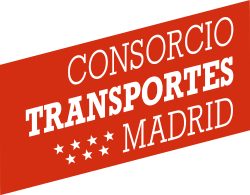You can help expand this article with text translated from the corresponding article in Spanish. (June 2015)Click [show] for important translation instructions.
|
Consorcio Regional de Transportes de Madrid | |
 | |
| Abbreviation | CRTM |
|---|---|
| Formation | May 16, 1985 [1] |
| Type | Public body |
| Legal status | Organismo autónomo English: Autonomous body |
| Purpose | Multi-modal public transport services |
| Headquarters | Plaza del Descubridor Diego de Ordás, Madrid, Spain |
Region served | Community of Madrid [a] |
| Services | Metro, light rail, and bus |
President | David Pérez García |
| Revenue | 2.598.893.772 [2] (2022) |
| Expenses | 2.559.738.319 [2] (2022) |
| Website | https://crtm.es |
The Consorcio Regional de Transportes de Madrid (CRTM; literally: Regional Consortium of Transportation for Madrid) is an autonomous body created by Spanish law 5/1985 which is tasked with coordinating the public transport operations across multiple providers in the Community of Madrid. [3] [4] It harmonizes fares for commuter rail, rapid transit, light rail and bus transport services provided by entities such as Renfe Cercanías, Metro de Madrid S.A. or the Empresa Municipal de Transportes de Madrid (EMT).
The Consorcio also extends into some councils of the nearby provinces of Toledo, Guadalajara and Cuenca, and, to a lesser extent, to some councils of the provinces of Segovia and Avila. [5] [6]
Its executive board is presided over by the regional minister for transport. The vice-president is a member of the Municipal Council of Madrid. The other board members are six further representatives of the regional government, two more representatives of the Madrid municipal council, three representatives of other municipal councils, two representatives of the State administration, two syndical representatives, two representatives of corporate associations and one representative of consumer associations. [7]